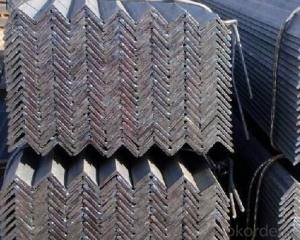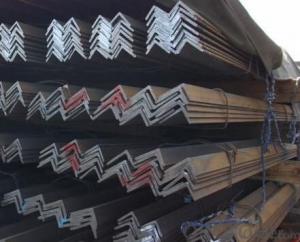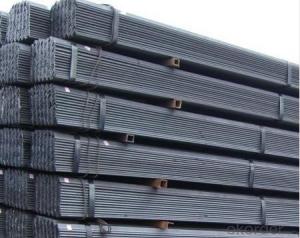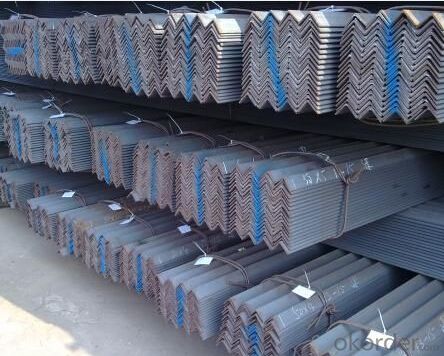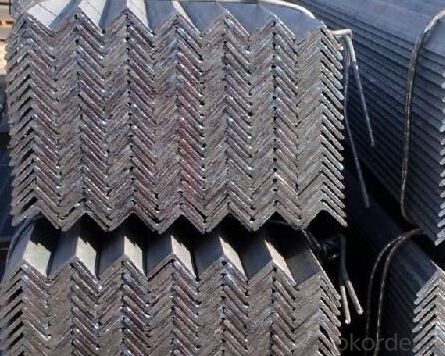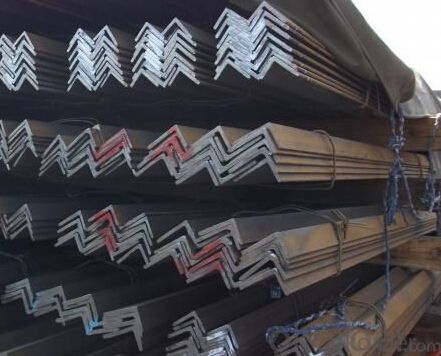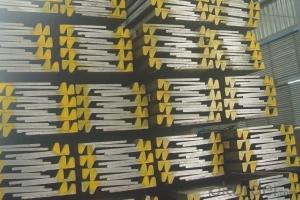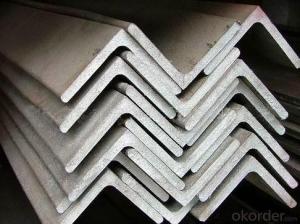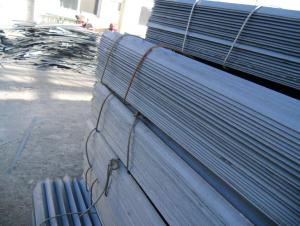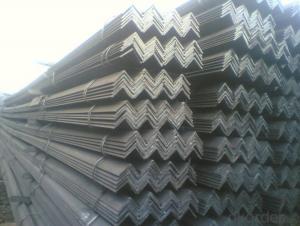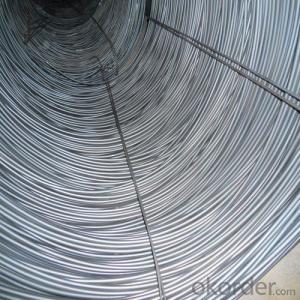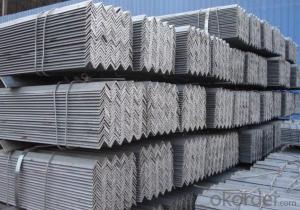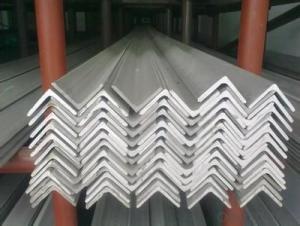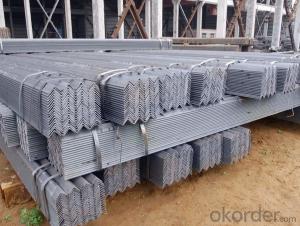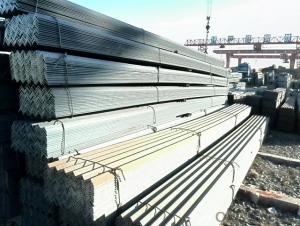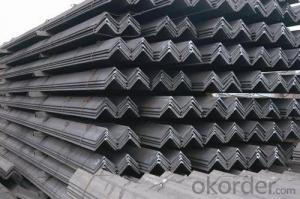Angle Steel with Material: GB Q235B, Q345B or Equivalent; ASTM A36; EN 10025, S235JR, S355JR; JIS G3192
- Loading Port:
- China main port
- Payment Terms:
- TT or LC
- Min Order Qty:
- 100 m.t.
- Supply Capability:
- 5000 m.t./month
OKorder Service Pledge
OKorder Financial Service
You Might Also Like
Product Description:
OKorder is offering Angle Steel with Material: GB Q235B, Q345B or Equivalent; ASTM A36; EN 10025, S235JR, S355JR; JIS G3192 at great prices with worldwide shipping. Our supplier is a world-class manufacturer of steel, with our products utilized the world over. OKorder annually supplies products to European, North American and Asian markets. We provide quotations within 24 hours of receiving an inquiry and guarantee competitive prices.
Product Applications:
Angle Steel with Material: GB Q235B, Q345B or Equivalent; ASTM A36; EN 10025, S235JR, S355JR; JIS G3192 are ideal for structural applications and are widely used in the construction of buildings and bridges, and the manufacturing, petrochemical, and transportation industries.
Product Advantages:
OKorder's Angle Steel with Material: GB Q235B, Q345B or Equivalent; ASTM A36; EN 10025, S235JR, S355JR; JIS G3192 are durable, strong, and resist corrosion.
Main Product Features:
· Premium quality
· Prompt delivery & seaworthy packing (30 days after receiving deposit)
· Corrosion resistance
· Can be recycled and reused
· Mill test certification
· Professional Service
· Competitive pricing
Product Specifications:
1 Standards: GB,ASTM,BS,AISI,DIN,JIS
2. Invoicing on theoretical weight or actual weight as customer request
3. Material:Material: GB Q235B, Q345B or Equivalent; ASTM A36; EN 10025, S235JR, S355JR; JIS G3192, SS400; SS540.
4. Size:
Sizes: 25mm-250mm | ||
a*t | ||
25*2.5-4.0 | 70*6.0-9.0 | 130*9.0-15 |
30*2.5-6.6 | 75*6.0-9.0 | 140*10-14 |
36*3.0-5.0 | 80*5.0-10 | 150*10-20 |
38*2.3-6.0 | 90*7.0-10 | 160*10-16 |
40*3.0-5.0 | 100*6.0-12 | 175*12-15 |
45*4.0-6.0 | 110*8.0-10 | 180*12-18 |
50*4.0-6.0 | 120*6.0-15 | 200*14-25 |
60*4.0-8.0 | 125*8.0-14 | 250*25 |
5. Material details:
Alloy No | Grade | Element (%) | |||||
C | Mn | S | P | Si | |||
|
|
|
|
|
|
| |
Q235 | B | 0.12—0.20 | 0.3—0.7 | ≤0.045 | ≤0.045 | ≤0.3 | |
|
|
|
|
|
|
| |
Alloy No | Grade | Yielding strength point( Mpa) | |||||
Thickness (mm) | |||||||
≤16 | >16--40 | >40--60 | >60--100 | ||||
≥ | |||||||
|
|
|
|
|
| ||
Q235 | B | 235 | 225 | 215 | 205 | ||
Alloy No | Grade | Tensile strength (Mpa) | Elongation after fracture (%) | ||||
Thickness (mm) | |||||||
| ≤16 | >16--40 | >40--60 | >60--100 | |||
≥ | |||||||
|
|
|
|
|
|
| |
Q235 | B | 375--500 | 26 | 25 | 24 | 23 | |
Usage & Applications of GB Q235 Angle Steel
Trusses;
Transmission towers;
Telecommunication towers;
Bracing for general structures;
Stiffeners in structural use.
Packaging & Delivery of GB Q235 Angle Steel
1. Transportation: the goods are delivered by truck from mill to loading port, the maximum quantity can be loaded is around 40MTs by each truck. If the order quantity cannot reach the full truck loaded, the transportation cost per ton will be little higher than full load.
2. With bundles and load in 20 feet/40 feet container, or by bulk cargo, also we could do as customer's request.
3. Marks:
Color mark: There will be color marking on both end of the bundle for the cargo delivered by bulk vessel. That makes it easily to distinguish at the destination port.
Tag mark: There will be tag mark tied up on the bundles. The information usually including supplier logo and name, product name, made in China, shipping marks and other information request by the customer.
If loading by container the marking is not needed, but we will prepare it as customer request.
FAQ:
Q1: Why buy Materials & Equipment from OKorder.com?
A1: All products offered byOKorder.com are carefully selected from China's most reliable manufacturing enterprises. Through its ISO certifications, OKorder.com adheres to the highest standards and a commitment to supply chain safety and customer satisfaction.
Q2: How soon can we receive the product after purchase?
A2: Within three days of placing an order, we will begin production. The specific shipping date is dependent upon international and government factors, but is typically 7 to 10 workdays.
Q3: What makes stainless steel stainless?
A3: Stainless steel must contain at least 10.5 % chromium. It is this element that reacts with the oxygen in the air to form a complex chrome-oxide surface layer that is invisible but strong enough to prevent further oxygen from "staining" (rusting) the surface. Higher levels of chromium and the addition of other alloying elements such as nickel and molybdenum enhance this surface layer and improve the corrosion resistance of the stainless material.
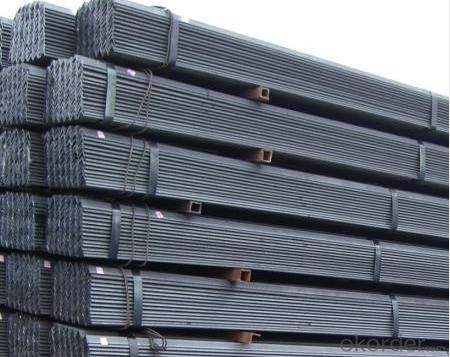
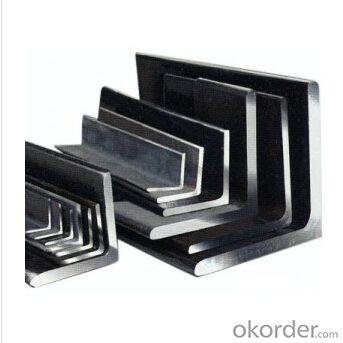
- Q: How do you calculate the moment of resistance for a steel angle?
- To calculate the moment of resistance for a steel angle, you need to consider the properties of the angle section and its dimensions. The moment of resistance is a measure of the ability of the angle to resist bending. The formula to calculate the moment of resistance is: Moment of Resistance = Plastic Section Modulus × Yield Strength of Steel The plastic section modulus can be determined using the following formula: Plastic Section Modulus = (Width × Thickness^2) / 6 In this formula, the width refers to the distance between the outer edges of the angle, and the thickness refers to the thickness of the angle section. The yield strength of the steel is a material property and can be obtained from its specification or reference material. It represents the maximum stress the steel can withstand without permanent deformation. By substituting the values of the plastic section modulus and the yield strength of the steel into the formula for the moment of resistance, you can calculate the value. It is important to note that the dimensions used in the calculations should be in consistent units, such as millimeters or inches, depending on the units used in the yield strength value. This calculation provides an estimate of the moment of resistance for a steel angle and is useful in structural engineering applications to determine the capacity of the angle section under bending loads.
- Q: How do you calculate the moment of inertia for a steel angle?
- To calculate the moment of inertia for a steel angle, you need to know the dimensions and properties of the angle. The moment of inertia can be calculated using the formula: I = (1/12) * b * h^3, where I is the moment of inertia, b is the base width of the angle, and h is the height of the angle.
- Q: What are the considerations for selecting the appropriate steel angle connection type?
- To ensure the structural integrity and stability of the connection, it is crucial to take several considerations into account when selecting the appropriate steel angle connection type. Firstly, the connection type should have the capacity to withstand anticipated loads, including dead load, live load, wind load, and seismic load. It should efficiently transfer these loads without causing any failure or compromise in the overall structure. Secondly, the connection type should meet the specific structural requirements of the project, such as the desired level of stiffness, flexibility, or rigidity. This includes considering factors like the connection's ability to resist deflection or movement under different loading conditions. Moreover, safety and reliability should be prioritized when choosing the connection type. It should provide a secure and durable connection that will not fail or deteriorate over time. Factors such as material properties, corrosion resistance, and maintenance requirements should be taken into consideration to ensure long-term performance. Cost-effectiveness is also important. The selected connection type should balance material and labor requirements while meeting necessary performance standards. Factors like ease of fabrication, installation, and maintenance can help determine the most cost-effective option. Compatibility and availability are other crucial factors. The connection type should be compatible with existing steel members and readily available in the market to avoid delays or supply chain issues during construction. Additionally, any specific design or construction constraints, such as space limitations or access restrictions, should be considered. The connection type should accommodate these constraints without compromising the overall structural integrity. Lastly, it is essential to ensure that the selected connection type complies with applicable building codes, standards, and regulations. This guarantees the safety and legal compliance of the structure. By carefully considering these factors, engineers and designers can choose the appropriate steel angle connection type that best meets the project's requirements in terms of load capacity, structural integrity, safety, cost-effectiveness, and compliance with codes and regulations.
- Q: How do you calculate the buckling strength of a steel angle?
- To calculate the buckling strength of a steel angle, several factors need to be considered. The buckling strength refers to the ability of the angle to resist buckling or collapse under applied loads. Firstly, the geometry of the steel angle must be determined. This includes the dimensions of the angle, such as the length of the legs and the thickness of the steel. Additionally, the cross-sectional properties, such as the moment of inertia and the section modulus, need to be calculated. Next, the effective length of the angle needs to be determined. The effective length is a measure of how restrained the angle is against buckling. It depends on factors such as the boundary conditions and the connection details. The effective length can be different for different modes of buckling, such as flexural or torsional buckling. Once the effective length is determined, the critical buckling load can be calculated using an appropriate buckling equation. There are several buckling equations available, depending on the boundary conditions and the mode of buckling. For example, the Euler buckling equation can be used for long, slender angles subjected to axial compression. Other equations, such as the Johnson buckling equation, may be used for more complex loading scenarios. The critical buckling load can then be converted to an allowable stress using a suitable safety factor. The safety factor accounts for uncertainties in the calculation and ensures that the angle can safely carry the applied load without buckling. The safety factor is typically specified by design codes or industry standards. In summary, calculating the buckling strength of a steel angle involves determining the geometry and effective length of the angle, applying an appropriate buckling equation, and converting the critical load to an allowable stress using a safety factor. It is important to consult relevant design codes and standards to ensure accurate and safe calculations.
- Q: Are steel angles recyclable?
- Yes, steel angles are recyclable. Steel is one of the most commonly recycled materials in the world because it retains its properties even after being melted and reshaped multiple times. This means that steel angles can be recycled and used to create new steel products. Recycling steel angles helps conserve natural resources, reduce energy consumption, and minimize the amount of waste that ends up in landfills. Additionally, the recycling process for steel is highly efficient and cost-effective, making it a sustainable option for the construction industry and other sectors that use steel angles.
- Q: Are there any environmental concerns associated with steel angles?
- Steel angles are associated with various environmental concerns. The production process involves extracting iron ore, mining coal for coke production, and emitting greenhouse gases during steelmaking. These activities contribute to deforestation, air pollution, and climate change. Furthermore, disposing of steel angles at the end of their life cycle can be problematic. Steel is not biodegradable and can take hundreds of years to decompose in landfills. Improper disposal can contaminate soil and water, posing risks to ecosystems and human health. Moreover, transporting steel angles from production facilities to construction sites can lead to carbon emissions and air pollution. The energy needed for transportation increases the overall environmental impact. To address these concerns, several strategies can be implemented. Firstly, using recycled steel instead of virgin steel significantly reduces the environmental footprint. Additionally, employing energy-efficient technologies in the production process can minimize greenhouse gas emissions. Lastly, responsibly disposing and recycling steel angles at the end of their life cycle helps reduce the environmental impact.
- Q: What are the different methods for fastening steel angles?
- There are several methods for fastening steel angles, depending on the specific application and load requirements. Some common methods include: 1. Bolting: One of the most popular methods for fastening steel angles is through bolting. This involves using bolts, washers, and nuts to secure the angle to a structure or another piece of steel. Bolts provide a strong and reliable connection, especially when tightened to the appropriate torque specification. 2. Welding: Welding is another common method for fastening steel angles, particularly when a permanent and robust connection is needed. It involves melting the base metal and the angle together, creating a strong joint. Welding can be done using various techniques such as arc welding, MIG welding, or TIG welding. 3. Riveting: Riveting involves using rivets to join the steel angles together or to other components. This method creates a secure and durable connection, especially in applications where vibration or movement may occur. Riveting requires drilling holes in the steel angles and using a rivet gun to insert the rivets through the holes. 4. Adhesive bonding: In certain applications, adhesive bonding can be used to fasten steel angles. This involves applying a high-strength adhesive or epoxy between the angle and the surface it is being attached to. Adhesive bonding provides a clean and aesthetically pleasing connection while also distributing loads evenly across the joint. 5. Clamping: Clamping is a temporary method for fastening steel angles, often used during assembly or construction. It involves using clamps or brackets to hold the angles in place until a more permanent fastening method, such as bolting or welding, can be applied. Each method has its advantages and disadvantages, and the choice depends on factors such as load requirements, structural design, cost, and the need for disassembly or adjustability. It is essential to select the appropriate fastening method to ensure the safety and integrity of the steel angles in their intended application.
- Q: What are steel angles used for?
- Steel angles are commonly used in construction and manufacturing industries for a variety of purposes. One of the main uses of steel angles is in structural applications. They are often used as supports, braces, and reinforcements in buildings, bridges, and other infrastructure projects. The L-shape of the angle provides added strength and stability, making it an ideal choice for constructing load-bearing structures. Steel angles are also used in the manufacturing industry for fabricating various products. They can be welded, drilled, and cut to create custom shapes and structures. They are commonly used as frames, brackets, and supports for machinery, equipment, and vehicles. Additionally, steel angles are used in the fabrication of furniture, shelves, racks, and other storage solutions. Their sturdy construction makes them suitable for supporting heavy loads, making them ideal for applications in warehouses, garages, and factories. In summary, steel angles are versatile and widely used in construction and manufacturing industries for their strength, stability, and adaptability. From supporting structures to fabricating products, they play a crucial role in various applications.
- Q: What are the different types of steel angles used in modular furniture?
- There are several different types of steel angles used in modular furniture, including equal angles, unequal angles, L-shaped angles, and slotted angles. These angles are used to provide structural support, reinforcement, and stability to the furniture pieces.
- Q: Can steel angles be cut to custom lengths?
- Yes, steel angles can be cut to custom lengths.
Send your message to us
Angle Steel with Material: GB Q235B, Q345B or Equivalent; ASTM A36; EN 10025, S235JR, S355JR; JIS G3192
- Loading Port:
- China main port
- Payment Terms:
- TT or LC
- Min Order Qty:
- 100 m.t.
- Supply Capability:
- 5000 m.t./month
OKorder Service Pledge
OKorder Financial Service
Similar products
Hot products
Hot Searches
Related keywords

